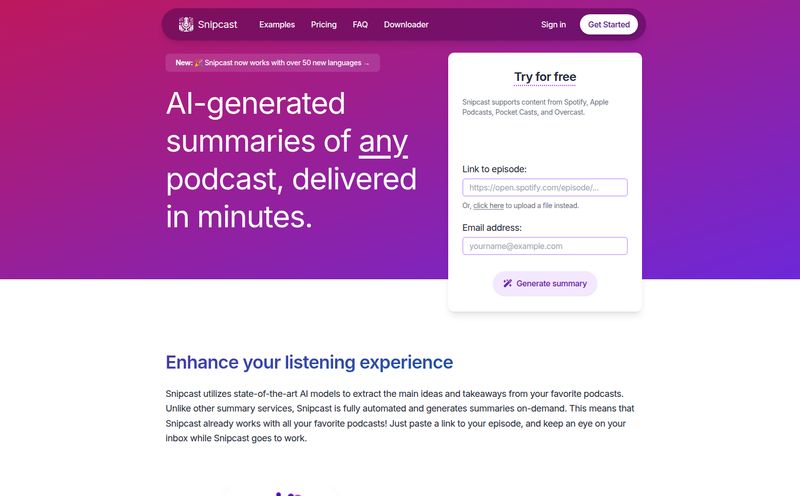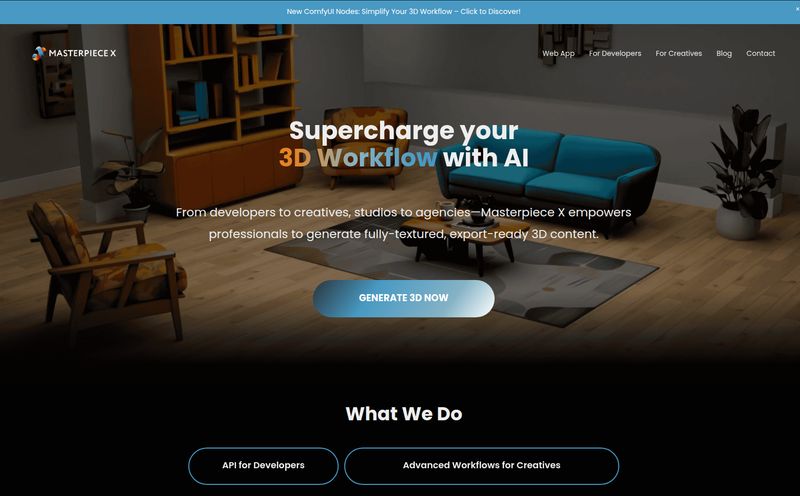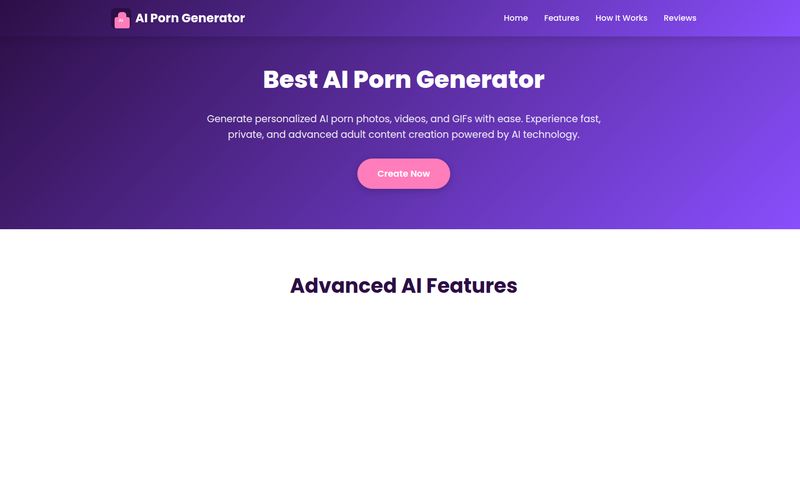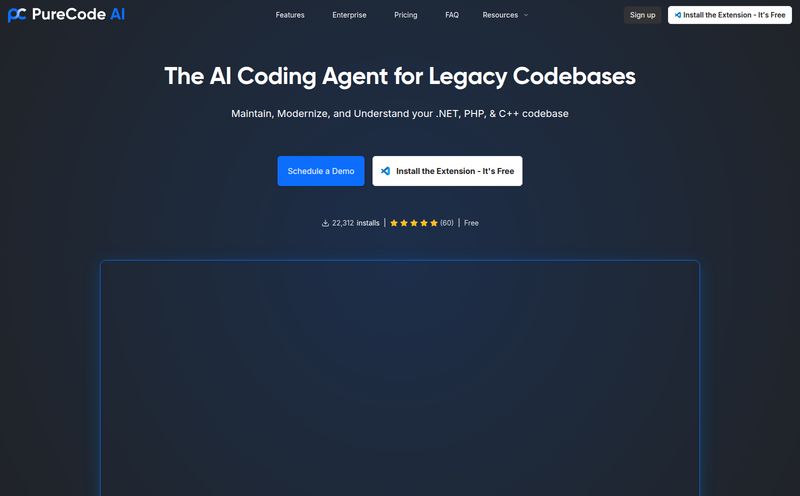If you’re in B2B sales and your target is e-commerce, you know the grind. You spend hours scraping LinkedIn, buying stale lists that have been sold a thousand times, and sending emails that get a whopping 1% reply rate—if you're lucky. Most days, it feels like you're shouting into a void. I've been there, managing campaigns where our best leads were people who updated their LinkedIn profile… three years ago. It’s a mess.
So, when a tool like Wavo comes along, claiming to have cracked the code on finding “hidden” e-commerce merchants, my inner skeptic raises an eyebrow. But my inner traffic-obsessed SEO nerd gets curious. They're not just talking about another list. They’re talking about a whole new way to find prospects. So, I did what I do best: I dug in. Is Wavo the real deal, or just another shiny object in the crowded sales tech space? Let's get into it.
What is Wavo, and Why Is It Different?
Okay, first things first. Wavo is a prospecting platform built specifically for companies that sell to e-commerce brands. Think agencies, SaaS companies, and 3PL providers. It’s not trying to be a one-size-fits-all solution like a ZoomInfo or Apollo.io. It's a specialist. A sniper rifle in a world of shotguns.
Here’s the part that got my attention. Wavo claims to identify merchants by their brand’s digital footprint, not their founder’s professional profile. This is a huge shift. We’ve all been conditioned to hunt for people based on job titles on LinkedIn. Wavo says, forget that. Instead, they analyze things like a store’s performance, its marketing spend, its tech stack, and other growth signals. It's less of a phonebook and more of a private investigator’s dossier. They’re looking for brands that are actually growing and have money to spend, not just people with “Founder” in their title.
This approach means they surface merchants you just won't find on traditional databases. The quiet ones who are too busy growing their business to polish their social media profiles. And honestly? Those are usually the best clients.
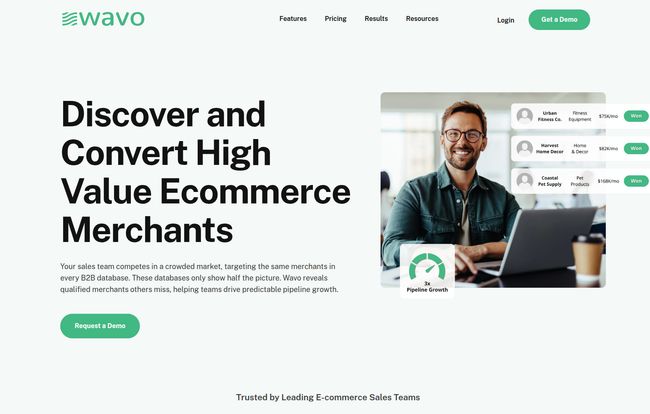
Visit Wavo
The Wavo Method: How They Find These “Hidden Gems”
It’s all about the signals. Instead of just scraping public data, Wavo looks at a combination of factors to qualify a merchant. They’re looking for evidence of growth and need. This includes:
- Store Performance: Are they getting traffic? Are sales trending up?
- Marketing Spend: Are they actively running ads on Facebook or Google? A brand spending on ads is a brand that's investing in growth.
- Growth Signals: Have they recently hired people, gotten funding, or experienced a surge in social media engagement?
Once they identify a promising brand, they go deeper, validating revenue bands, growth trajectory, and most importantly, finding the contact details for the actual decision-makers. This means you’re not just getting a name; you’re getting context. You’re reaching out to someone at a company you know is qualified. It changes the entire dynamic of the outreach.
The Features That Actually Move the Needle
A platform is only as good as its tools. Wavo isn't just a database; it’s an outreach platform. Here are the bits that I think make a tangible difference.
A Curated E-commerce Database
The core of Wavo is its data. They talk about having a limited customer base to maintain data quality. At first, that sounds like a negative, but think about it. If everyone had access to these leads, they’d be burned out in a week. By keeping the pool smaller, Wavo ensures the merchants in their system aren't being bombarded by hundreds of sales reps using the exact same tool. It’s an interesting take on exclusivity that I actually respect. It protects the value of the data for everyone involved.
AI Personalization That Doesn’t Make You Cringe
We’ve all seen bad AI. “Hello {{FirstName}}, I see you work at {{CompanyName}}.” It's awful. Wavo’s approach seems a bit more refined. They offer AI personalization prompts designed to help you write emails that are actually, well, personal. It can pull in data points about the prospect’s recent growth or marketing activities to help you craft a hook that shows you’ve done your homework. One of their case studies mentions a 4X better response rate. I’m always skeptical of big numbers, but moving from a 1% to a 4% response rate is the difference between hitting your quota and not. It's a big deal.
"We're seeing 4% response rates versus less than 1% with other data enrichment and sequencing platforms... Wavo enriches data on our personalized variables in ways that actually get merchants interested in talking to us."
- Gabe Rey, Giant Partners
Deliverability and Automation
This is a nerdy point, but it's critical. If your emails land in spam, nothing else matters. Wavo offers features like static IP sending and optimized delivery. For anyone who’s ever fought with email blacklists or had their domain’s reputation tank, this is a breath of fresh air. They handle the technical backend of cold email so you can focus on writing good copy. The platform also has built-in email automation, allowing you to create sequences and follow up without living in your inbox.
My Honest Take: The Good and The Not-So-Good
No tool is perfect. Let's break down where I think Wavo shines and where you might want to pause and think.
The Good Stuff is pretty compelling. The lead quality is the hero here. The idea of reaching out to merchants who are pre-vetted based on actual business performance is a game-changer. It shifts the sales process from a numbers game (send 1,000 emails to get one meeting) to a strategy game (send 50 highly targeted emails to get five meetings). The AI-powered personalization and built-in deliverability features are just the icing on the cake. It solves a very specific, very painful problem for B2B teams in the e-commerce world.
Now for the reality check. First, the pricing is not for the faint of heart. Two of their three plans require a demo, which in the B2B SaaS world is code for “it’s not cheap.” This isn't a tool for a freelancer on a shoestring budget. Second, the base “Growth” plan, while a great entry point, is limited. With only one email sequence and one user seat, growing teams will likely hit that ceiling fast. Finally, the Professional plan is billed annually, which can be a significant upfront cash commitment for smaller agencies or startups. It’s a tool for businesses who are serious and ready to invest in their sales pipeline.
Let's Talk Money: Wavo Pricing Explained
Transparency in pricing is a big thing for me. Wavo is partially transparent, which is better than nothing! They have three main tiers. Here's how they break down:
| Plan | Best For | Key Features |
|---|---|---|
| Growth | Small teams starting out | 3,000 contacts/month, 1 email sequence, 1 user seat |
| Professional | Sales teams scaling up | Unlimited contacts & users, advanced automation, premium AI, full API access |
| Custom | Enterprise needs | Everything in Pro + custom integrations, SLAs, dedicated IPs |
The Growth plan gives you a solid taste of the platform. But the real power lies in the Professional plan with its unlimited contacts and users. You'll need to request a demo to get the price for the Professional and Custom tiers, so be prepared for a sales conversation. This is pretty standard for platforms at this level that offer dedicated success managers and custom setups.
So, Should You Give Wavo a Shot?
After digging through everything, here’s my take. It all comes down to focus and budget.
You should definitely book a demo with Wavo if:
- You are an agency, SaaS company, or 3PL whose primary customer is an e-commerce brand.
- You're tired of the low-quality, high-volume game of traditional lead-gen databases.
- You value lead quality over sheer quantity and are willing to invest in a tool that provides it.
- Your team is ready to scale its outreach efforts in a smarter, more personalized way.
You might want to hold off if:
- You sell to a wide variety of industries, not just e-commerce.
- You’re a solo founder or have a very tight budget.
- You're just looking for a cheap list of names and emails to blast. This ain't it.
The Final Word on Wavo
Wavo isn't trying to reinvent the wheel; it's trying to build a much better car. It’s a specialized, premium tool designed to solve a specific problem: finding and engaging high-value e-commerce merchants. The shift from focusing on professional profiles to analyzing a brand's actual digital footprint is, in my opinion, the right move. Its a smarter way to prospect in a world overflowing with noise.
While the investment might be a consideration, the potential return in terms of higher response rates, better leads, and a more predictable pipeline seems pretty compelling. In a sea of generic outreach, finding the right conversation is everything. And Wavo might just be the most accurate map I've seen for navigating the e-commerce market.
Frequently Asked Questions
- How does Wavo get its data on e-commerce merchants?
- Wavo focuses on a brand's "digital footprint." This means they analyze data from the store itself, like its performance, the technology it uses, its marketing spend, and other public growth signals, rather than just scraping social media profiles.
- Is Wavo just another B2B database or email list?
- Not really. While it provides a database, it's a complete outreach platform. It includes features for email automation, AI-powered personalization to help write better emails, and tools to improve deliverability, making it more of an all-in-one prospecting solution.
- What makes Wavo different from a tool like Apollo.io or ZoomInfo?
- The main difference is its specialization. While tools like Apollo and ZoomInfo cover all industries, Wavo is built exclusively for finding and engaging e-commerce merchants. Its data signals and qualification criteria are tailored to this specific market.
- Does Wavo have a free trial?
- Based on their website, it doesn't look like they offer a traditional free trial. Instead, they encourage potential customers to book a personalized demo to see the platform in action and discuss pricing for their higher-tier plans.
- Who is the perfect customer for Wavo?
- The ideal Wavo customer is a B2B company—like a marketing agency, a software (SaaS) provider, or a third-party logistics (3PL) company—that is laser-focused on selling its products or services to e-commerce brands and is ready to invest in a high-quality lead generation tool.
- Can I integrate Wavo with my existing CRM?
- The Professional and Custom plans offer full API access and custom integrations, which means you should be able to connect Wavo to your existing sales stack, such as your CRM, to ensure a smooth workflow.
